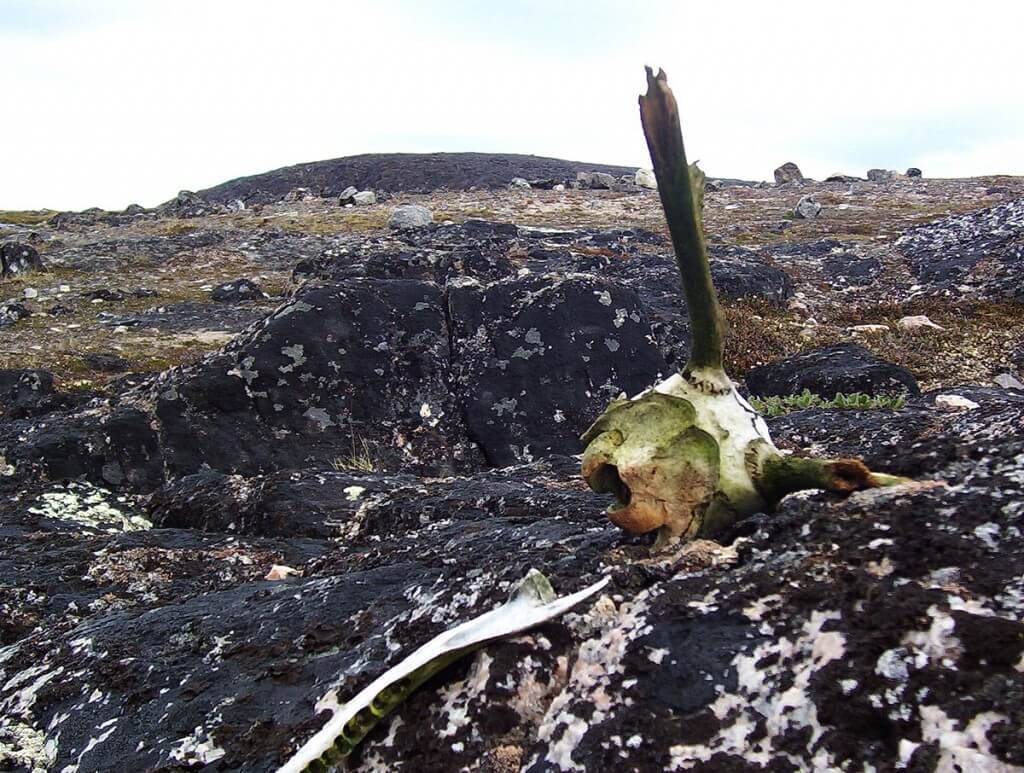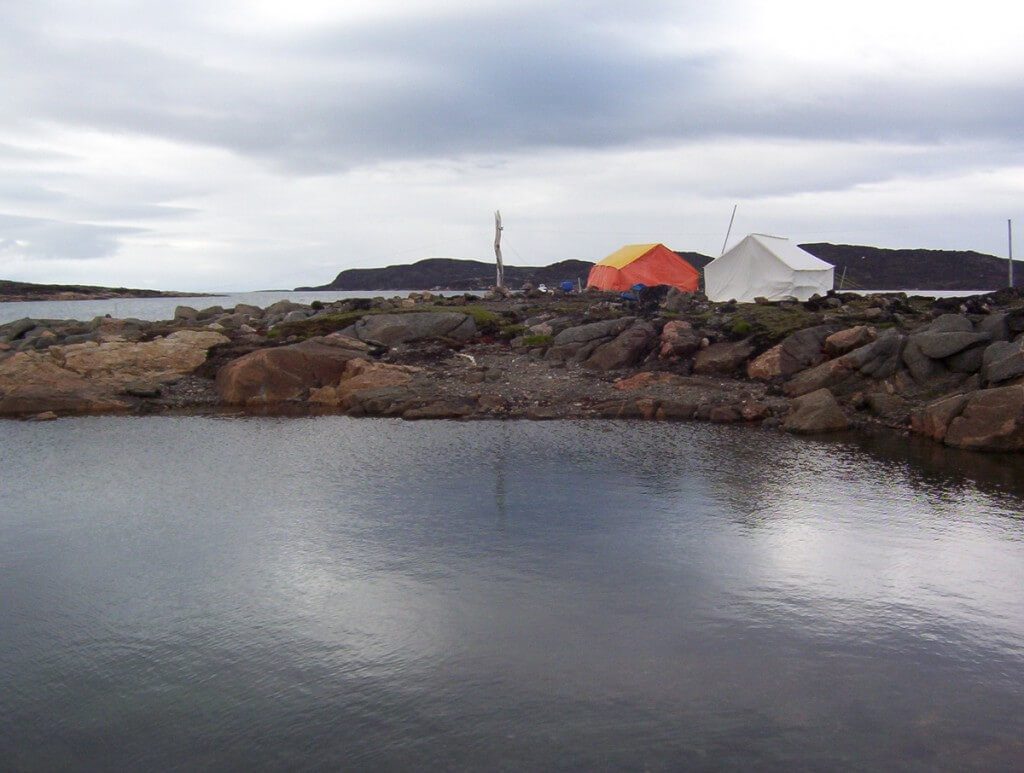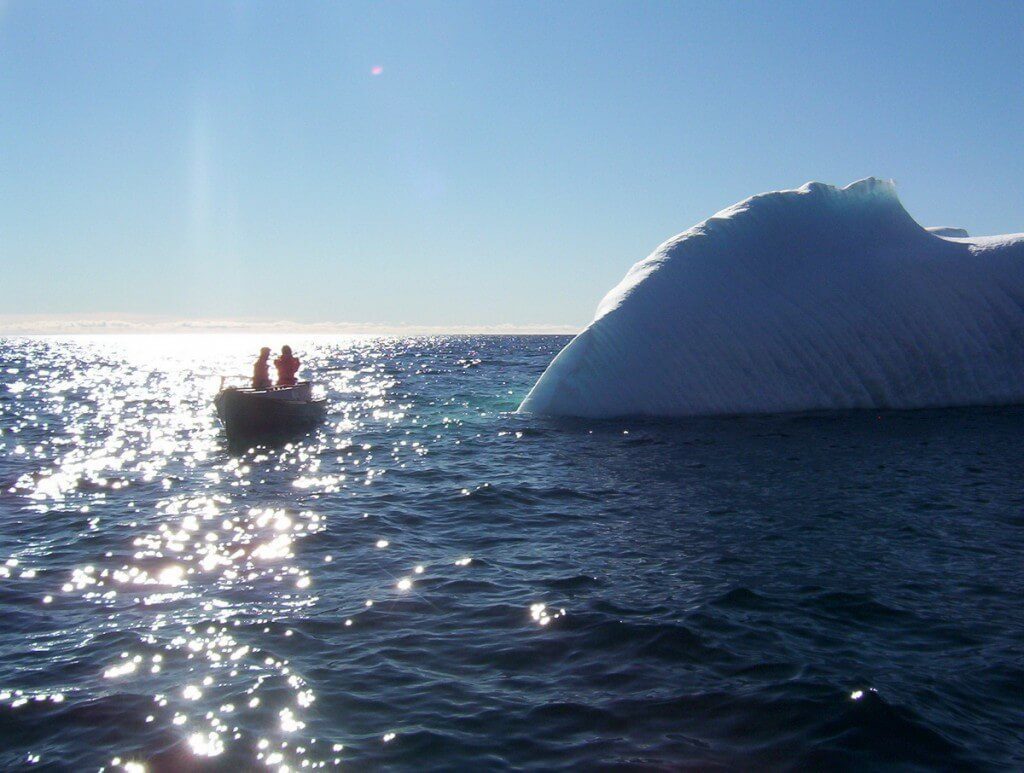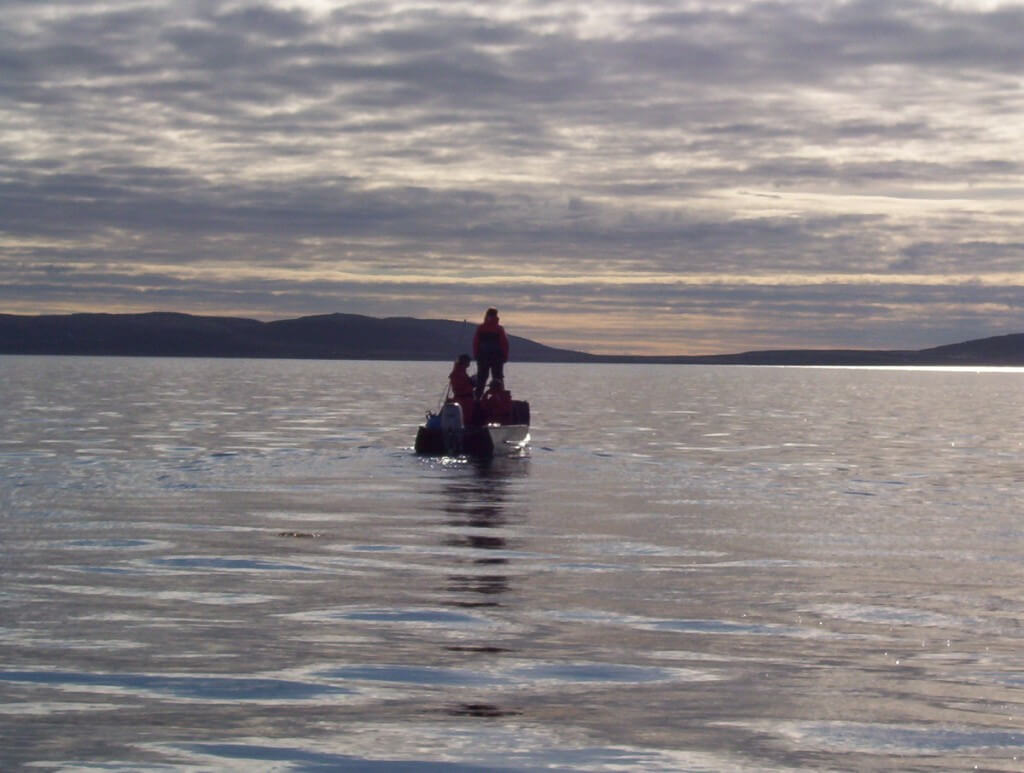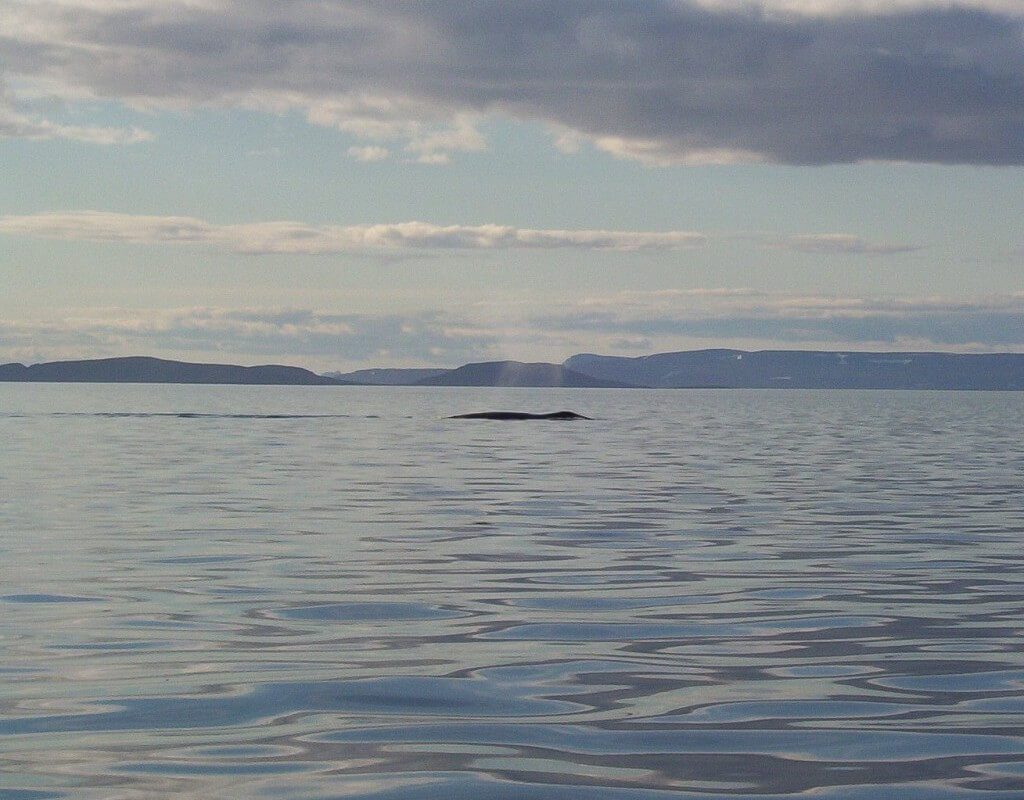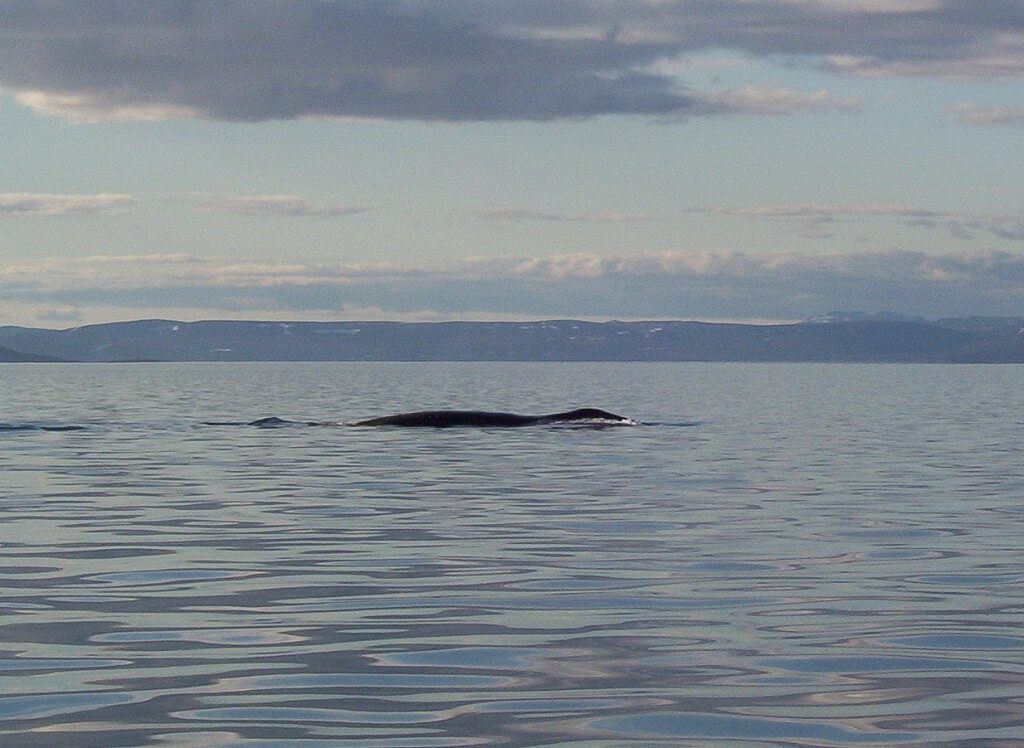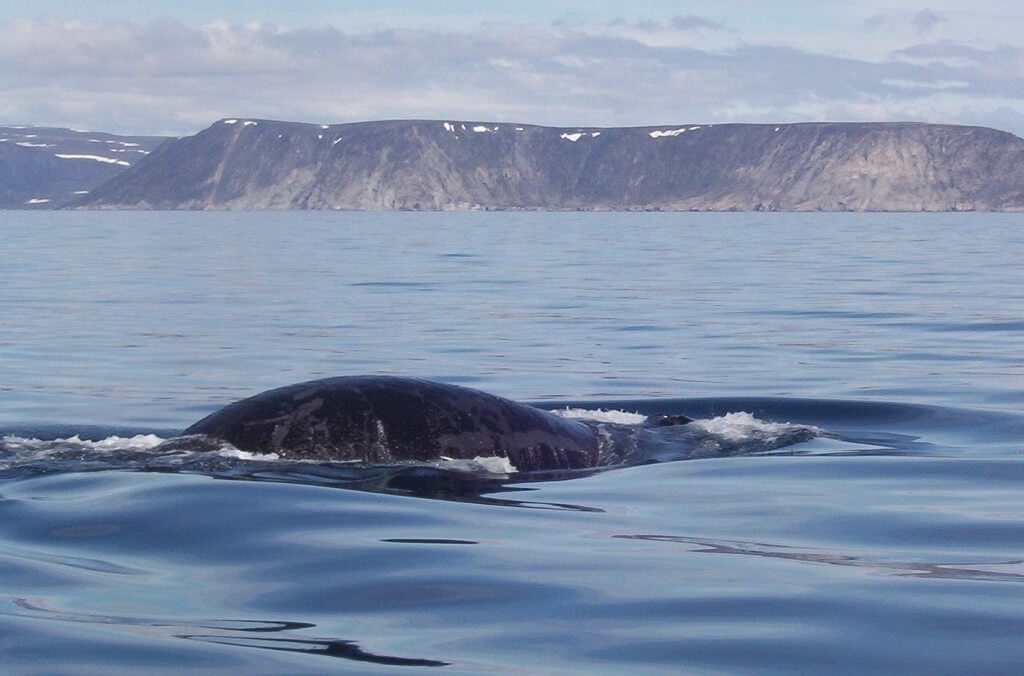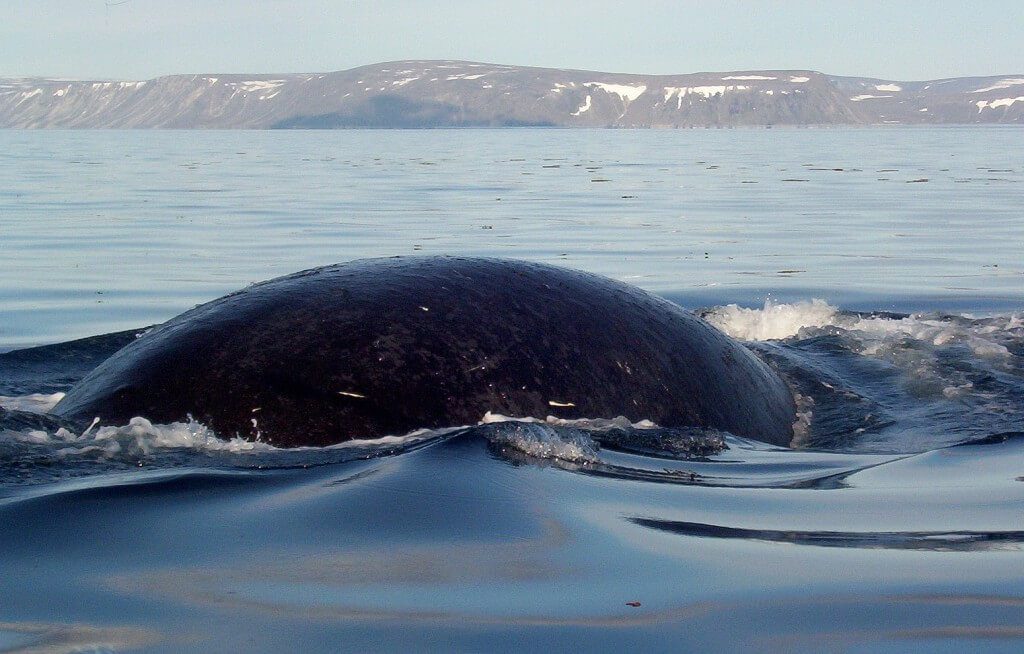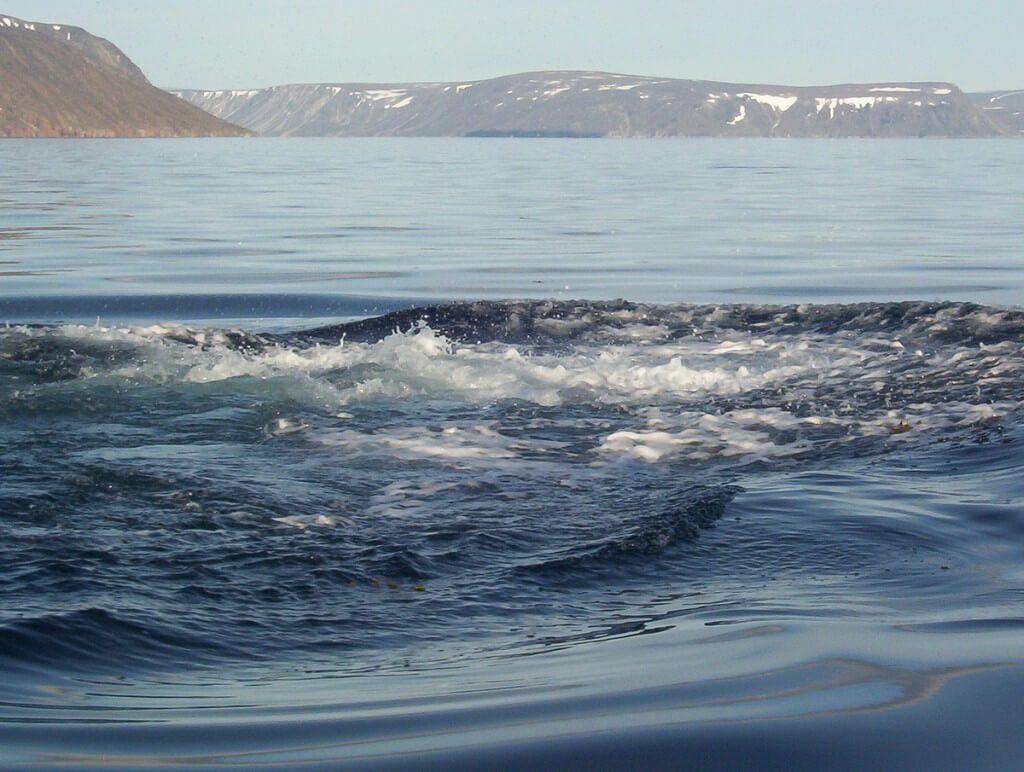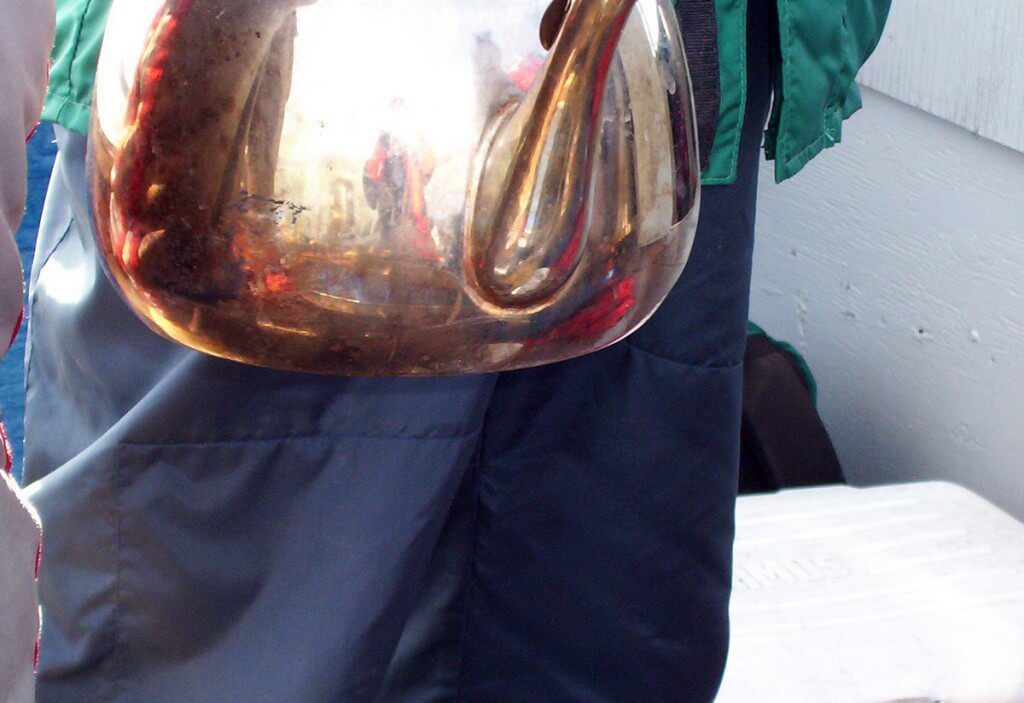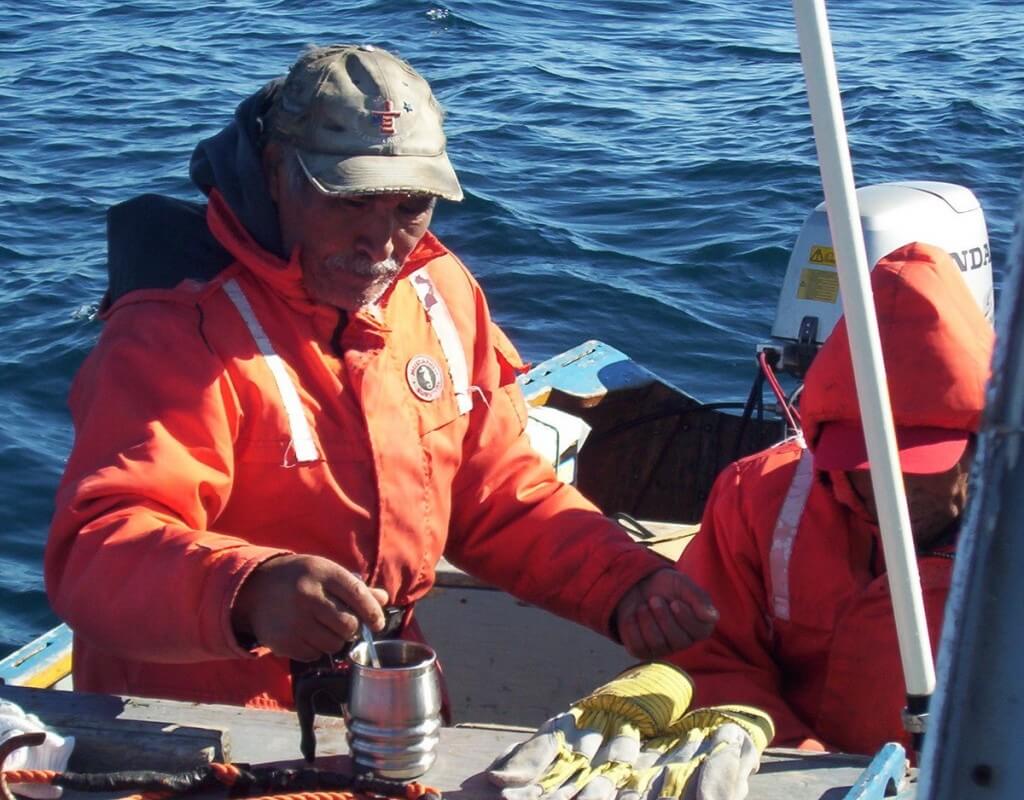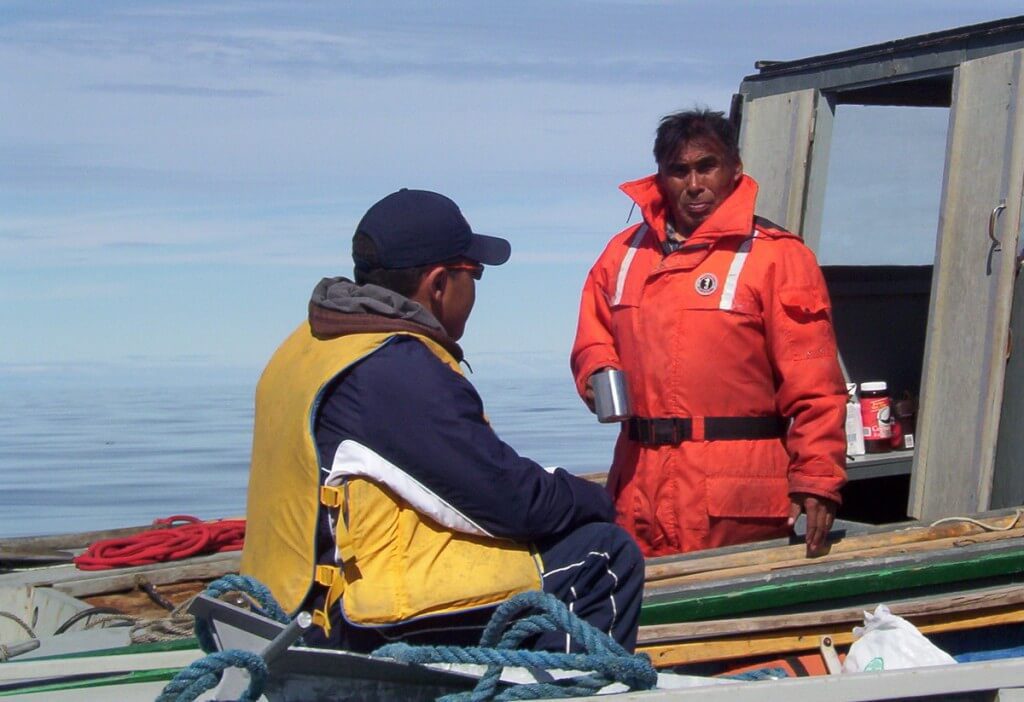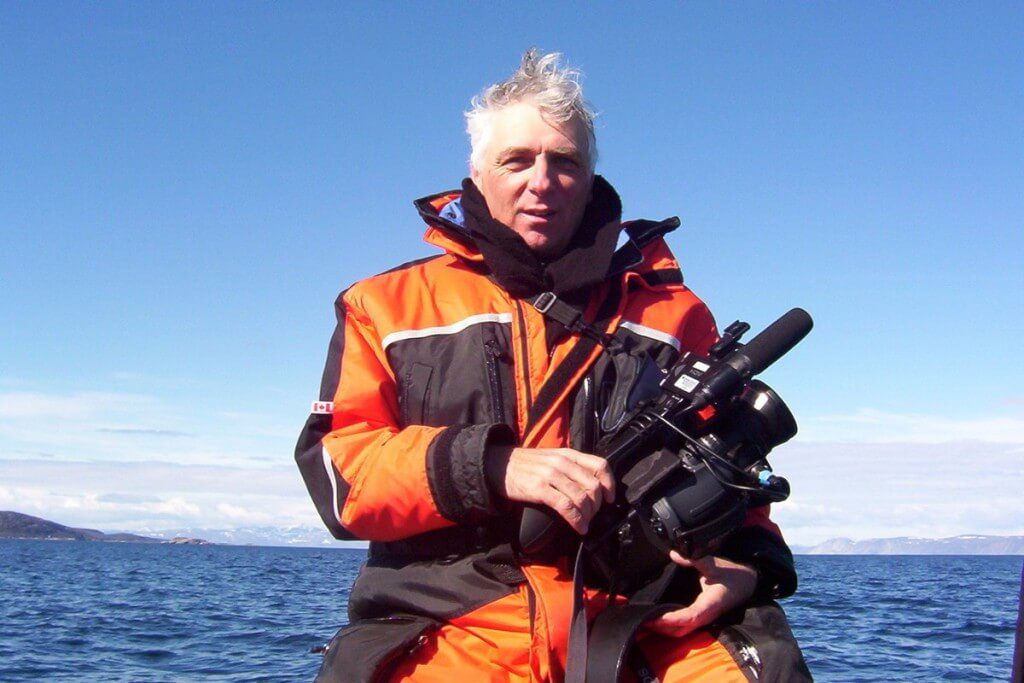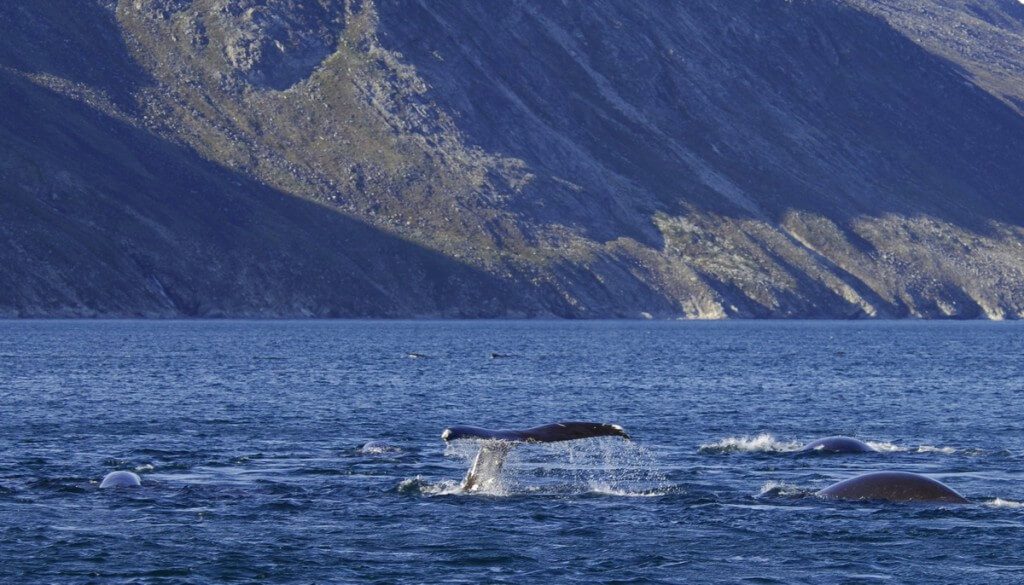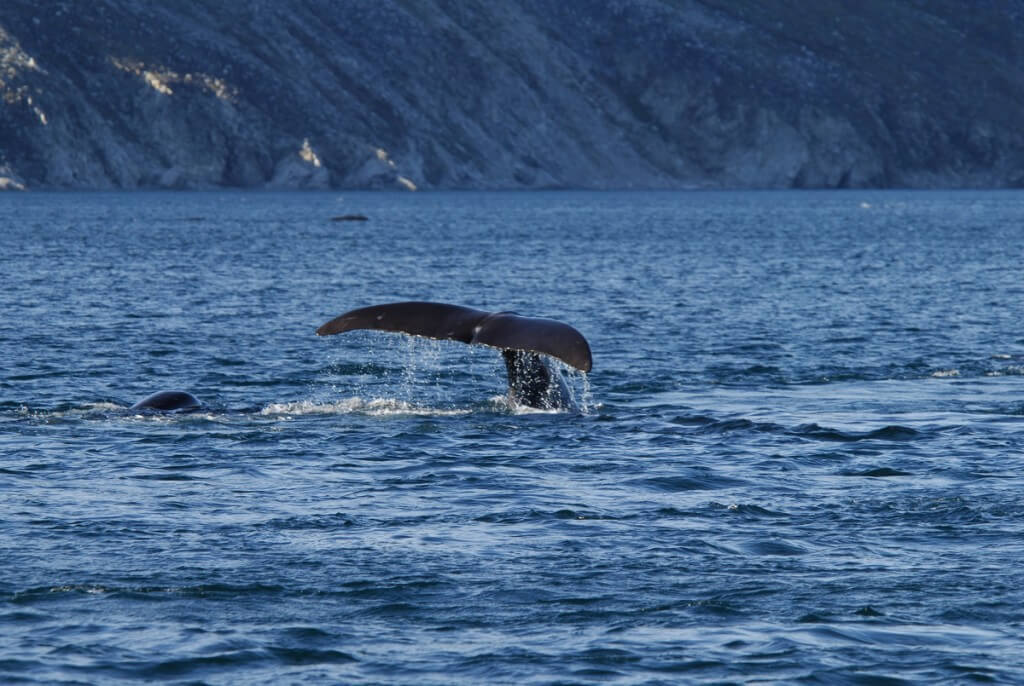Bowhead Whales we sighted off Kekerten Island

Another cold wet morning greeted me on Kekerten Island as I prepared for what I hoped would be a day of filming Bowhead Whales off Baffin Island in Nunavut.
It’s actually hard to remember what time of day it was when I took this picture in the Arctic. Was it midnight, noon, middle of the afternoon, or ten at night? In The Land of the Midnight Sun, it was very easy to lose track of time.
As it turned out, it was actually around five in the morning, time to get up, have a quick bite, and then board the Inuit boats and get out on the ocean before the tide turned and trapped us on shore.
As we headed west from Kekerten Island on the lookout for whales, we could make out an iceberg along the distant skyline.
After a quick run across the ocean, the iceberg turned out to be much larger than originally thought.
Not far from the iceberg, we continued our photographic and scientific hunt for Bowhead Whales.
Spotting whales is not an easy undertaking.
The key thing to watch for was any disturbance of the water’s surface. You will note the small ripple off to the right of center of this picture. Having spotted the ripple, we promptly headed towards it.
As we drew closer, the ripple turned out to be a Bowhead Whale.
The large hump is part of this whale’s back. The small hump at the front, just above the water, is the whales’ nose or blow hole.
This drawing gives you some idea of just how big a Bowhead Whale actually is. If you re-look at my photograph above, you only see the whale’s nose, or blow hole, and a very small section of its back. The rest of this massive animal, as seen in this drawing, is under the water.
We watched as this whale prepared for another dive.
In a flash, the whale lifted its tail and vanished into the deep.
Come noon, we pulled our boats together out on the ocean and took time for a lunch. I was very pleased to see a kettle, wrongly assuming I was going to get a hot coffee or tea. As it turned out, the Inuit who were with us do not drink hot tea or coffee when they are out on the ocean. They, like their ancestors, only drink hot water when out on the cold icy waters of the Arctic Ocean.
The reason they drink hot water is not only to help warm their heads and hands, but also because they often sweat in the survival suits.
Given that we had been sweating, we didn’t drink coffee or tea because they are both a diuretic. A diuretic, according to the Mayo Clinic, is a substance that makes the body release sodium and water. We had released loads of water in the form of sweat in our Arctic survival suits, so, as the Inuit have done for generations, we drank warm water to warm up but more importantly, to re-hydrate our bodies.
With our quick break over, I prepared to film the Bowhead whales once again
We soon found a Bowhead whale doing a head-stand.
Further inside the bay, there was a large group of Bowhead Whales. With so much traffic, we decided to play it safe, turn off the motor, and drift with the current. It is estimated by Fisheries and Oceans Canada that there are around 11,000 Bowhead Whales living in Canadian waters. They move together in large family groups of up to 15 whales.
With the boat in constant motion beneath me, I filmed this Bowhead as it swam under our boat.
A Bowhead Whale lifted its tail and then slid under the water.
Another Bowhead Whale moved quickly towards our boat. Just before it might have collided with our boat, it slipped beneath the water and skimmed below us.
My long day with the Bowhead Whales was truly a profound experience.
You May Also Enjoy:
A Juvenile Bowhead whale off Baffin Island

